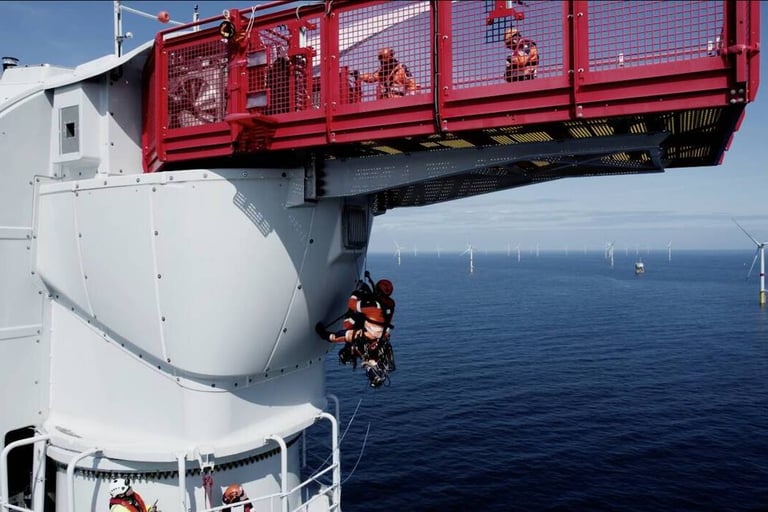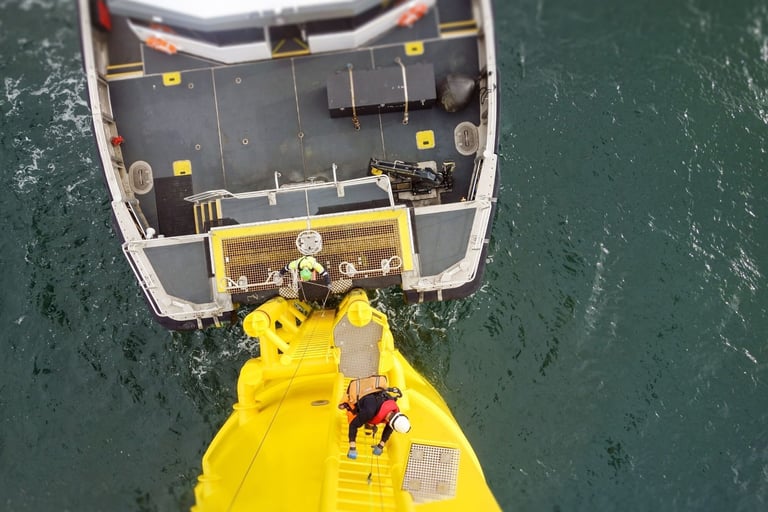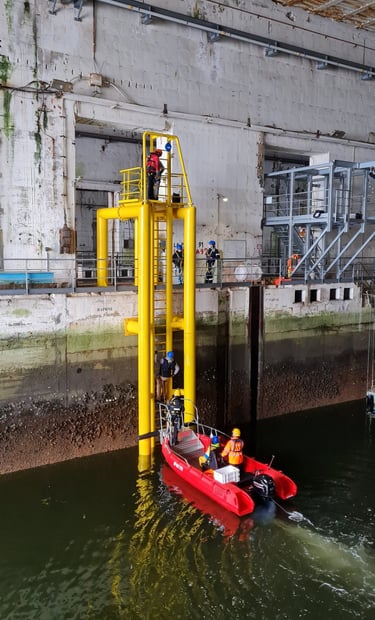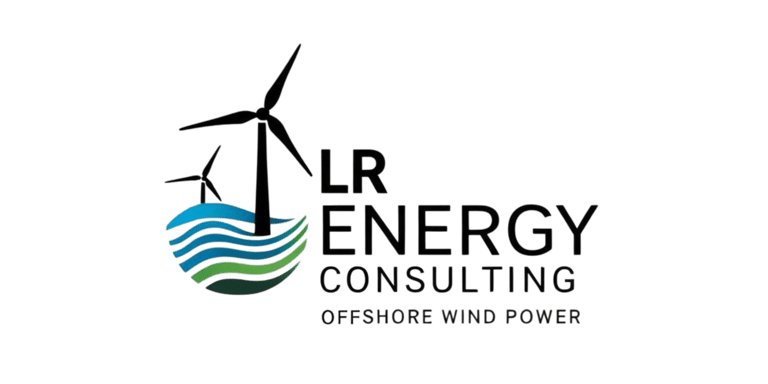Offshore Wind
Offshore wind refers to the generation of electricity using wind turbines installed at sea, either fixed to the seabed or floating. These turbines harness the power of the wind to turn a generator and produce clean energy. Because wind at sea is typically stronger and more consistent than on land, offshore turbines can generate large amounts of electricity.
What is Offshore Wind?
The Benefits of Offshore Wind
One of the main advantages of offshore wind is that it produces renewable electricity without emitting CO₂. It can supply clean power to millions of homes. Since the turbines are located far from residential areas, they cause minimal noise or visual impact. Offshore wind is a key solution in the transition to greener energy.
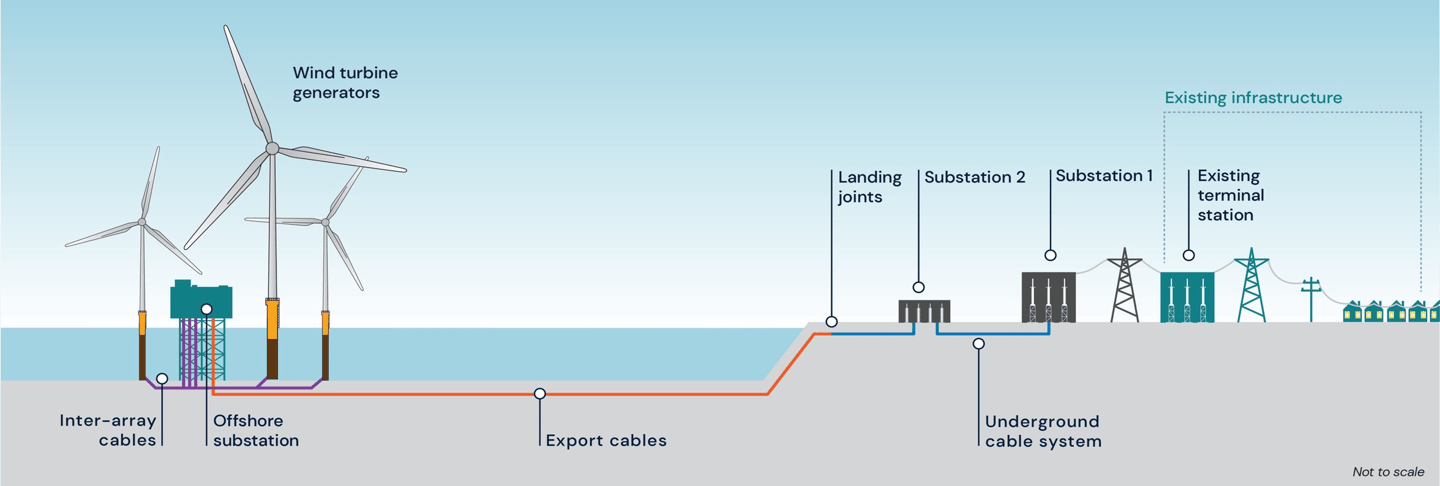

An offshore wind farm generates electricity using wind turbines installed at sea, where wind conditions are stronger and more consistent.
Each turbine captures wind energy and converts it into electricity. This electricity travels through underwater cables to a central offshore substation.
At the substation, the voltage is increased to reduce energy loss during transport.
The electricity is then sent to shore via a main export cable, reaching an onshore substation.
There, it is adjusted and connected to the national power grid, ready to be distributed to homes and businesses.
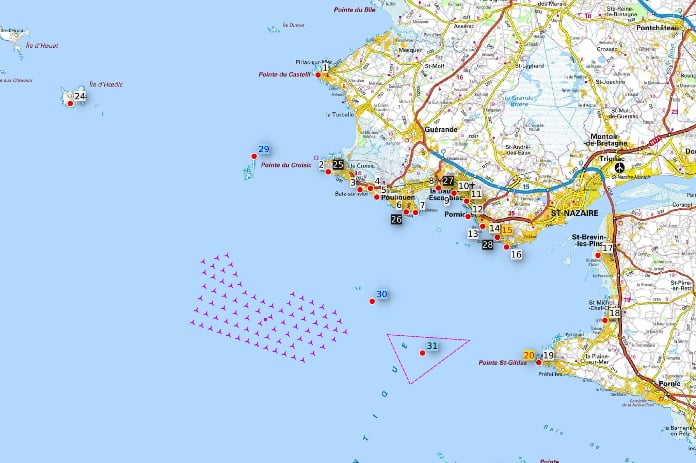

Windfarm Configuration
For our explanation, we will use the project named Parc du Banc de Guérande in France as example
The PBG Wind Farm – Key Specifications
Commissioning Date: November 2022
Energy Output: Covers approximately 20% of the electricity consumption of the Loire-Atlantique department, equivalent to 700,000–720,000 homes
Turbines: Comprises 80 wind turbines, each rated at 6 MW, manufactured by GE Renewable Energy
Total Installed Capacity: 480 MW
Location: Situated 12 to 20 kilometers off the coast of western France, near Saint-Nazaire
Surface Area: 78 km²
Foundation Type: Turbines are mounted on monopile foundations driven into the seabed at depths ranging from 12 to 25 meters
The picture shows the offshore substation built in Saint-Nazaire by Chantiers de l'Atlantique, surrounded by GE wind turbines.
The wind farm can be likened to an octopus — the substation forms the "head," while rows of turbines stretch out like its arms across the sea.
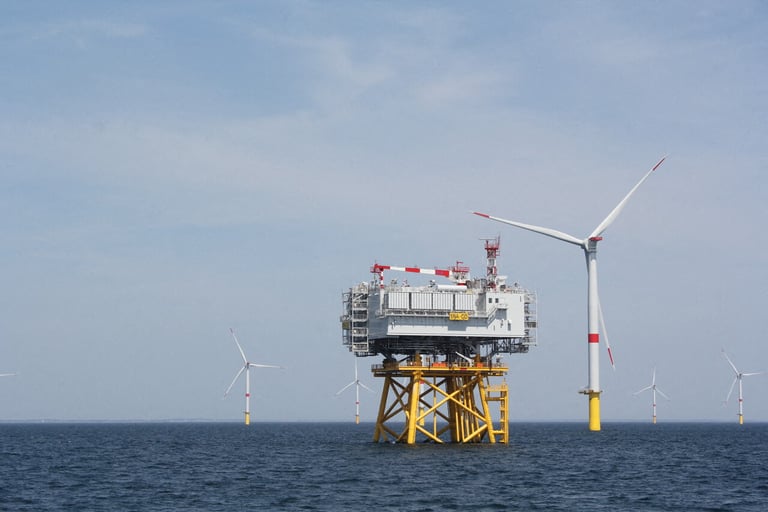

Windfarm Installation
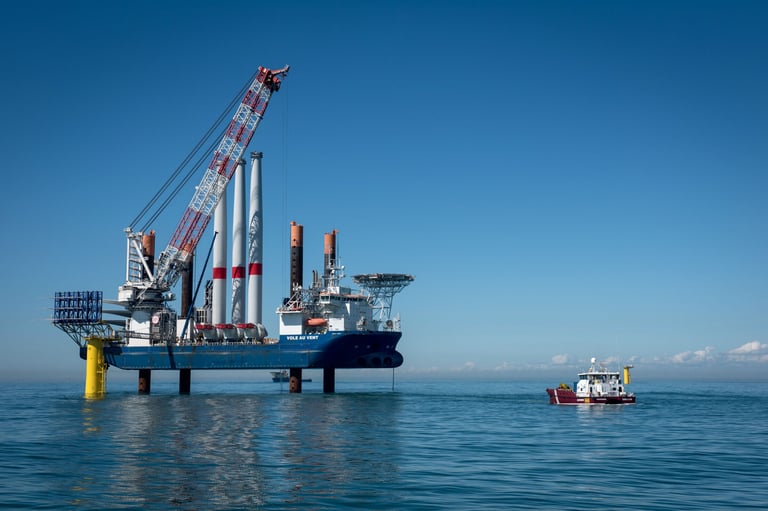

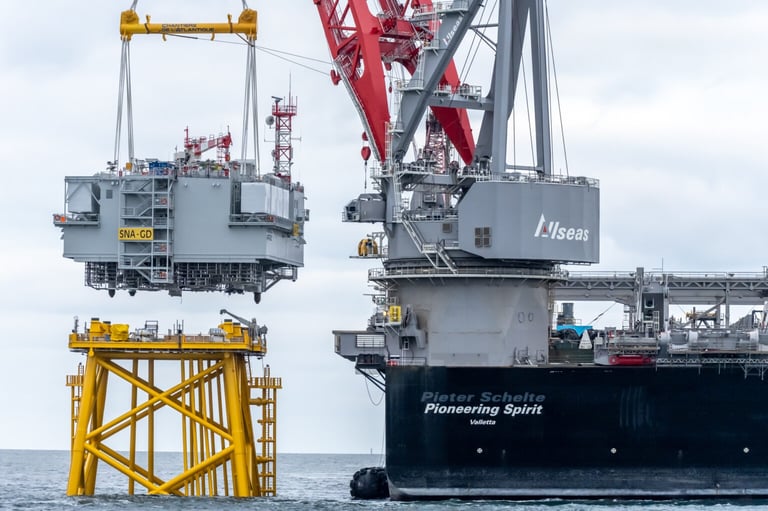

Pionnering Spirit Vessel installing the Offshore Substation
WIV (Wind Turbine Installation Vessel) installing the Offshore Windturbines
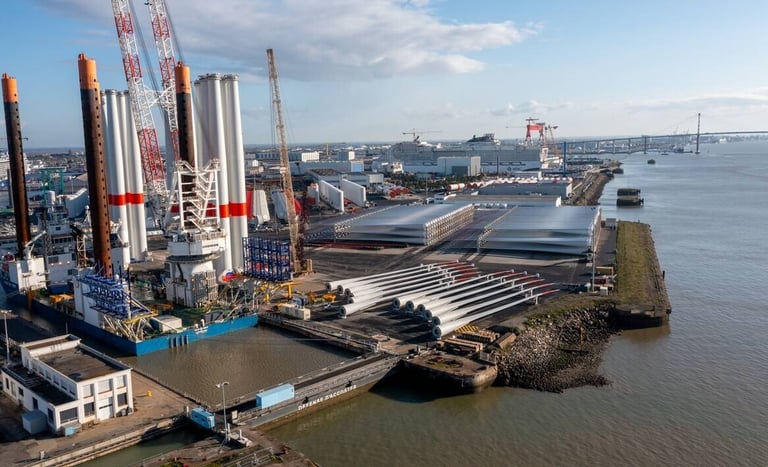


The Logistic Hub stores all the wind turbine components, and the Jan De Nul vessel loads these components for transport and installation at the wind farm.
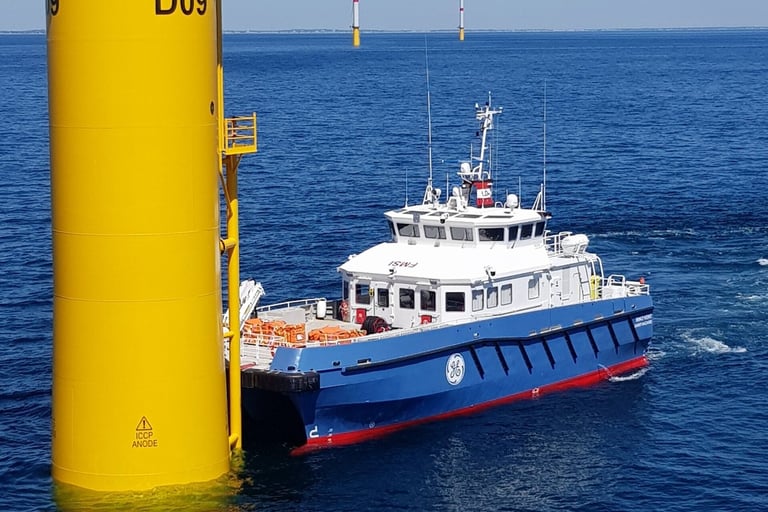



SOV (Service Operation Vessel) at the Wind Farm
This type of vessel can accommodate 40 to 80 technicians in addition to its crew.
It allows teams to be deployed directly onto the turbines using a motion-compensated gangway system, ensuring safe transfers even in rough sea conditions.
CTV (Crew Transfer Vessel) at the Wind Farm
This type of vessel can transfer between 6 and 24 technicians to the wind farm.
Typically, 1 to 3 CTVs are used on site to speed up and simplify technician deployment, reducing the need to reposition the larger SOV.
Windfarm Commissioning & Maintenance
Project Milestones


Operational Personnel and Offshore Working Conditions
The operation of an offshore wind farm relies on a wide range of technical expertise.
It brings together multiple disciplines, including wind turbine technicians, rope access specialists, painters, electrical and mechanical engineers, marine coordinators, ROV operators, and safety professionals.
Personnel typically work on rotations of 14 to 21 days, with 12-hour shifts each day — without interruption. They are either stationed offshore on Service Operation Vessels (SOVs) or transferred daily via Crew Transfer Vessels (CTVs). After their offshore rotation, team members are granted an equal rest period onshore.
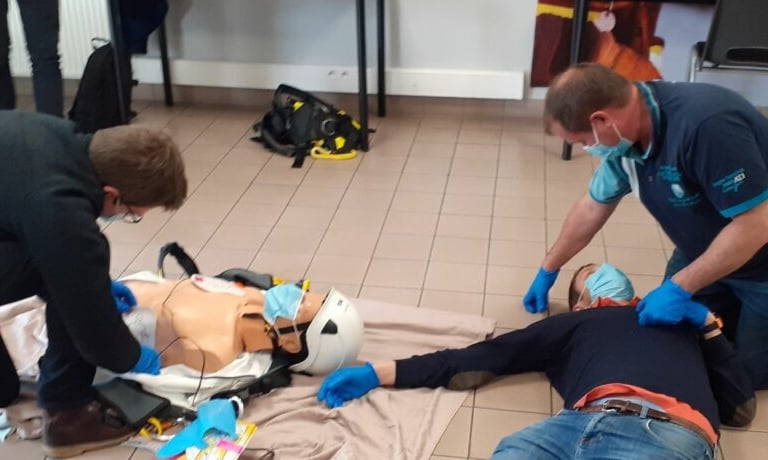

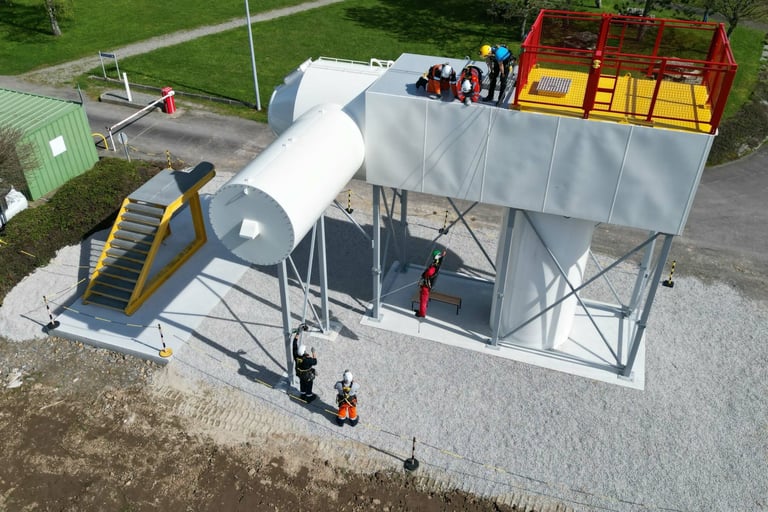

Offshore work requires strict coordination and compliance with safety procedures, as teams operate in a dynamic and often harsh marine environment.
To meet these demands, all personnel must complete mandatory training, such as GWO (Global Wind Organisation) certifications, covering working at height, fire awareness, first aid, and manual handling.
The complexity of offshore operations calls for high technical proficiency, adaptability, and seamless teamwork to ensure safe, efficient, and continuous wind farm performance.
Below, some pictures from IFOPSE, with different exercices related to first aid & work at height.
FIV: Foundation Installation Vessel
CLV: Cable Laying Vessel
SIV: Substation Installation Vessel
WTG: Wind Turbine Generator
WIV: Wind Turbine Installation Vessel
SOV: Service Operational Vessel
CTV: Crew Transfer Vessel
This diagram outlines the main phases of an offshore wind farm project, from installation to maintenance, along with the types of vessels used at each stage.
The process begins with foundation installation, typically carried out by a Foundation Installation Vessel (FIV). Next, Cable Laying Vessels (CLVs) install the inter-array cables, followed by the setup of the offshore substation, handled by a Substation Installation Vessel (SIV).
Wind Turbine Generators (WTGs) are then installed using Wind Installation Vessels (WIVs). Once in place, mechanical and electrical completion is conducted with support from WIVs, Service Operation Vessels (SOVs), and Crew Transfer Vessels (CTVs).
Commissioning and long-term maintenance rely primarily on SOVs and CTVs, ensuring the wind farm operates efficiently and safely throughout its lifespan. Each vessel plays a critical role in the project's success, providing specialized capabilities adapted to offshore conditions.
